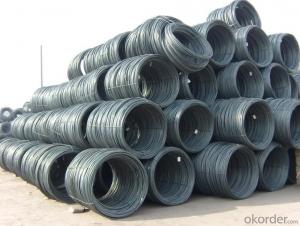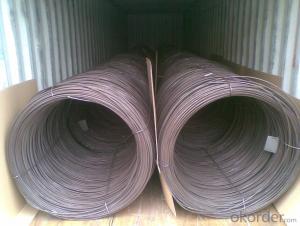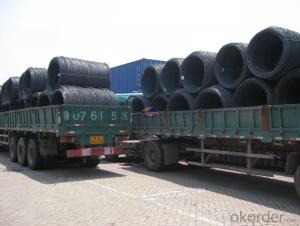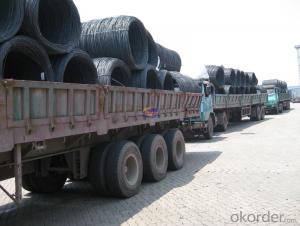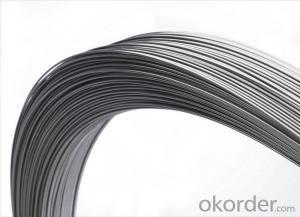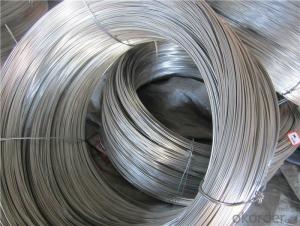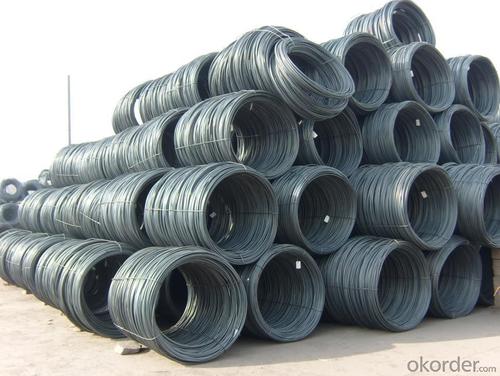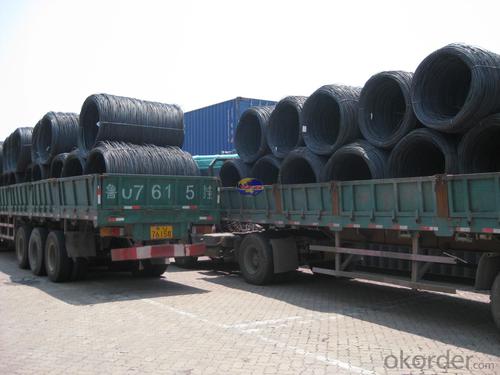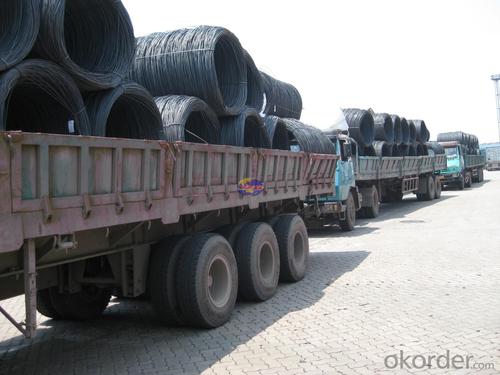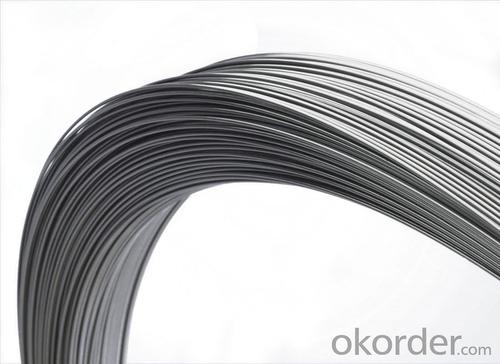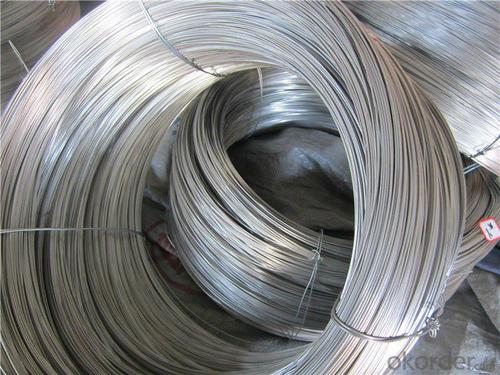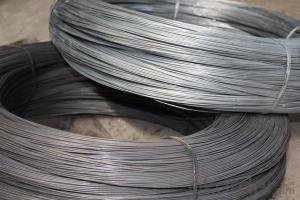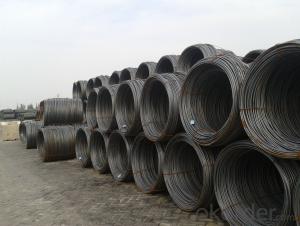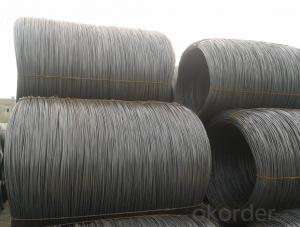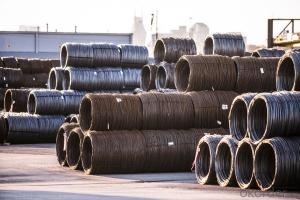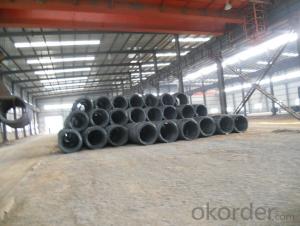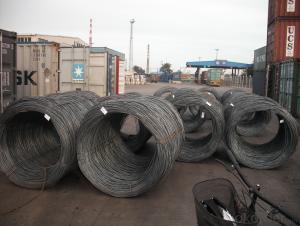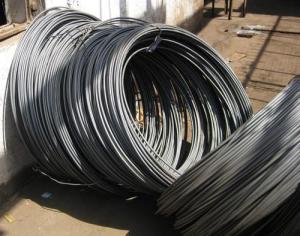SAE1006Cr Carbon Steel Wire Rod 17.5mm for Welding
- Loading Port:
- Shanghai
- Payment Terms:
- TT OR LC
- Min Order Qty:
- 100 m.t
- Supply Capability:
- 30000 m.t/month
OKorder Service Pledge
OKorder Financial Service
You Might Also Like
Specification
Description of SAE1006Cr Carbon Steel Wire Rod 17.5mm for Welding:
OKorder is offering Color Coated Steel Coil Prepainted Steel Coil at great prices with worldwide shipping. Our supplier is a world-class manufacturer of steel, with our products utilized the world over. OKorder annually supplies products to European, North American and Asian markets. We provide quotations within 24 hours of receiving an inquiry and guarantee competitive prices.
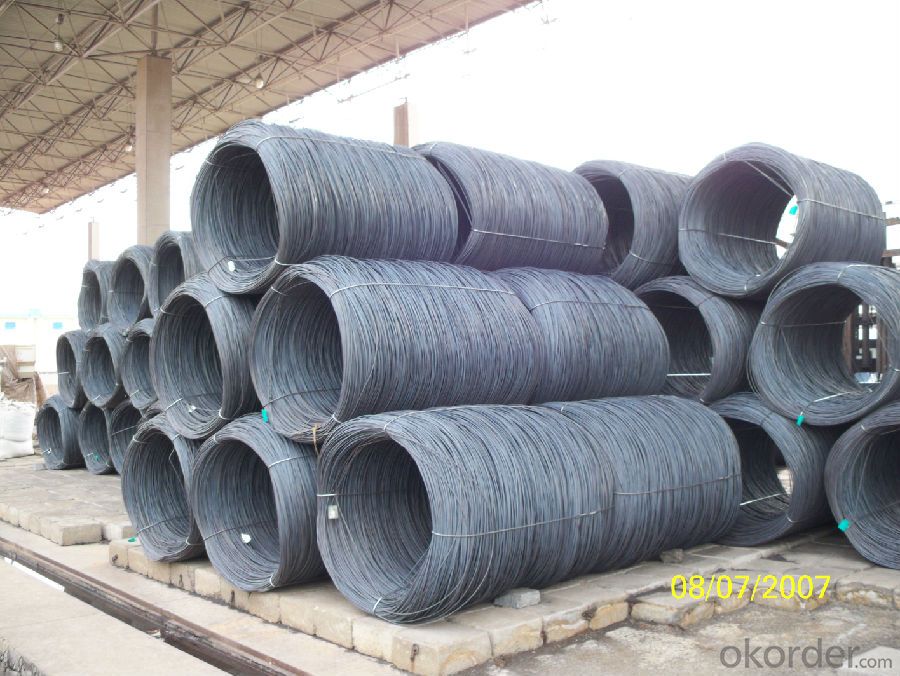
Applications of SAE1006Cr Carbon Steel Wire Rod 17.5mm for Welding:
Color Coated Steel Coil Prepainted Steel Coil are ideal for structural applications and are widely used in the construction of buildings and bridges, and the manufacturing, petrochemical, and transportation industries.
Main Product Features of SAE1006Cr Carbon Steel Wire Rod 17.5mm for Welding:
· Premium quality
· Prompt delivery & seaworthy packing (30 days after receiving deposit)
· Corrosion resistance
· Can be recycled and reused
· Mill test certification
· Professional Service
· Competitive pricing
Specifications of SAE1006Cr Carbon Steel Wire Rod 17.5mm for Welding:
1, Introduction: Color coated steel coils(sheets), i. E. PPGI, also called prepainted steel coils(sheets), are made of galvanized steel coils(sheets) with polymer coatings as surface. It's a new enclosure material and building board with characteristics of light-weighted, heat preserved&insulated, easily installed with bright colors.
2, Production Process: Pretreatment(Degreasing)_Drying_Chromating_Paint Basic Oil_Cooling_Drying_Color Coating_Cooling_Film-covering_Rolling Up
3, Characteristics:
Good at corrosion resistence. Besides zinc coating of the basic plate of galvanized steel sheet, the color coating as the surface has double lifetime to ensure better anticorrosion effect.
With excellent cold bending molded manufacturablity, PPGI products can be processed or directly used as final product. As being light-weighted and conveniently transported, they're widly used to replace wood to save energy.
4.There're thousands of colors can be chosen as per different application. Any color plays well in decoration.
No pollution with high recycling rate, PPGI coils and sheets are strongly recommended as enviroment-friendly products by the government.
5, eye bands and 4 circumferential bands in steel, galvanized metal fluted rings on inner and outer edges, galvanized.
| commodity | SAE1006Cr Carbon Steel Wire Rod 17.5mm for Welding |
| Techinical Standard: | JIS G3302-1998, EN10142/10137, ASTM A755 |
| grade | Q195,Q215,Q235,SAE1006,SAE1008 SAE1006Cr |
| Types: | Mesh welding |
| Base metal | galvanized, galvalume, cold rolled steel |
| Thickness | 0.14-1.0mm(0.16-0.8mm is the most advantage thickness) |
| Width | 610/724/820/914/1000/1200/1219/1220/1250mm |
| Type of coating: | PE, SMP, PVDF |
| Zinc coating | Z60-150g/m2 or AZ40-100g/m2 |
| Top painting: | 5 mic. Primer + 15 mc. R. M. P. |
| Back painting: | 5-7 mic. EP |
| Color: | According to RAL standard |
| ID coil | 508mm610mm |
| Coil weight: | 2--3MT |
| Package: | Properly packed for ocean freight exportation in 20'containers |
| Application: | Industrial panels, roofing and siding for painting/automobile |
| Price terms | FOB, CFR, CIF |
| Payment terms | 20%TT in advance+80% TT or irrevocable 80%L/C at sight |
| delivery time | 25 days after recepit of 20% TT |
| Remarks | Insurance is all risks |
| MTC 3.1 will be handed on with shipping documents | |
| We accept SGS certificatation test |
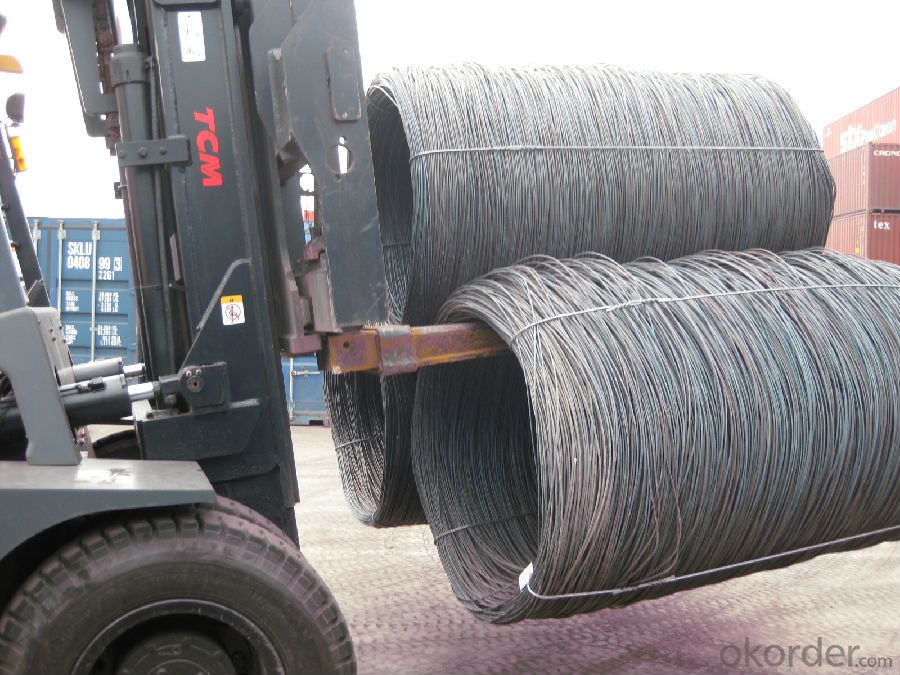
FAQ of SAE1006Cr Carbon Steel Wire Rod 17.5mm for Welding:
Q1: Why buy Materials & Equipment from OKorder.com?
A1: All products offered byOKorder.com are carefully selected from China's most reliable manufacturing enterprises. Through its ISO certifications, OKorder.com adheres to the highest standards and a commitment to supply chain safety and customer satisfaction.
Q2: How do we guarantee the quality of our products?
A2: We have established an advanced quality management system which conducts strict quality tests at every step, from raw materials to the final product. At the same time, we provide extensive follow-up service assurances as required.
Q3: How soon can we receive the product after purchase?
A3: Within three days of placing an order, we will begin production. The specific shipping date is dependent upon international and government factors, but is typically 7 to 10 workdays.
Q4: What makes stainless steel stainless?
A4: Stainless steel must contain at least 10.5 % chromium. It is this element that reacts with the oxygen in the air to form a complex chrome-oxide surface layer that is invisible but strong enough to prevent further oxygen from "staining" (rusting) the surface. Higher levels of chromium and the addition of other alloying elements such as nickel and molybdenum enhance this surface layer and improve the corrosion resistance of the stainless material.
Q5: Can stainless steel rust?
A5: Stainless does not "rust" as you think of regular steel rusting with a red oxide on the surface that flakes off. If you see red rust it is probably due to some iron particles that have contaminated the surface of the stainless steel and it is these iron particles that are rusting. Look at the source of the rusting and see if you can remove it from the surface.
- Q: How is steel wire rod used in the manufacturing of wire for elevator counterweights?
- The production of wire for elevator counterweights relies heavily on steel wire rods. These rods, typically made from carbon or alloy steel, undergo a series of manufacturing processes to meet the specific requirements for elevator counterweights. To begin, the steel wire rods are thoroughly cleaned and descaled to eliminate any impurities or surface contaminants. This guarantees that the resulting wire is of the utmost quality and possesses exceptional resistance to corrosion. Subsequently, the rods are drawn through a succession of dies to reduce their diameter and increase their length. This drawing process imparts the desired tensile strength and flexibility to the wire. Following the drawing process, the wire is typically subjected to annealing, which relieves any internal stresses and enhances its ductility. This involves heating the wire to a precise temperature and gradually cooling it. Annealing not only improves the mechanical properties of the wire but also enhances its resistance to fatigue and wear. Once the wire has been drawn and annealed, it undergoes surface treatment procedures such as coating or galvanizing. Coating the wire with a protective layer, such as zinc or epoxy, serves to prevent corrosion and prolong its lifespan. Galvanizing entails immersing the wire in a bath of molten zinc to create a protective zinc coating, which offers excellent corrosion resistance. Finally, the coated or galvanized wire is further processed to achieve the desired shape and size for elevator counterweights. It can be cut into specific lengths or wound onto spools to facilitate easier handling during the manufacturing process. The wire is then utilized to construct the internal structure of elevator counterweights, which are essential for balancing the elevator car and ensuring its smooth operation. In conclusion, steel wire rods play a crucial role in the production of wire for elevator counterweights. They undergo various processes, including cleaning, drawing, annealing, and surface treatment, to produce high-quality wire with the necessary strength, flexibility, and corrosion resistance. This wire is then utilized to construct the internal structure of elevator counterweights, thus ensuring the safe and efficient operation of elevators.
- Q: How is steel wire rod used in the production of wire for musical instruments?
- Steel wire rod is an essential component in the production of wire used for musical instruments. It serves as the raw material that undergoes various manufacturing processes to transform it into the desired wire form. Firstly, the steel wire rod serves as the starting point for creating different gauges of wire required for different musical instruments. It is typically made from high-quality steel with specific chemical compositions and mechanical properties that ensure the desired strength and durability of the final wire product. Once the steel wire rod is obtained, it undergoes a series of processes such as drawing, annealing, and tempering to achieve the desired characteristics. Drawing involves pulling the wire rod through a series of dies to reduce its diameter and increase its length. This process helps in refining the wire's surface finish and improving its tensile strength. Annealing is another crucial step that involves heating the wire to a specific temperature and then slowly cooling it. This process helps to relieve internal stresses, improve the wire's ductility, and enhance its ability to resonate when used in musical instruments. After annealing, the wire may undergo further processes like tempering, which involves heating the wire to a lower temperature and then cooling it rapidly to achieve specific hardness and springiness. This step is crucial in creating wire with the desired flexibility and responsiveness required for various musical instruments. Once the wire is produced, it can be used in the construction of different musical instruments. For example, steel wire is commonly used in the production of guitar strings, piano wires, and various brass instruments. The specific gauge and composition of the wire are carefully selected to produce the desired pitch, tonal quality, and playability of the instrument. In conclusion, steel wire rod plays a vital role in the production of wire for musical instruments. It serves as the raw material that undergoes various manufacturing processes to create wires of different gauges, strengths, and tonal characteristics. These wires are then used in the construction of various musical instruments, contributing to the creation of beautiful sounds and melodies.
- Q: What are the common production processes for phosphorus-coated steel wire rod?
- The common production processes for phosphorus-coated steel wire rod typically include wire drawing, annealing, coating application, and curing.
- Q: What are the different heat treatment processes used for steel wire rod?
- Steel wire rod undergoes several heat treatment processes to enhance its mechanical properties and overall performance. These commonly used processes include annealing, quenching and tempering, normalizing, and stress relieving. Annealing is a process where the steel wire rod is heated to a specific temperature and gradually cooled to room temperature. This reduces the wire rod's hardness and brittleness, making it more malleable and easier to work with. Annealing also eliminates any internal stresses or strains that might have occurred during manufacturing. Quenching and tempering, a two-step heat treatment, involves heating the steel wire rod to a high temperature and rapidly cooling it using a quenching medium like oil or water. The rapid cooling hardens the wire rod, forming a brittle phase called martensite. However, this hardened wire rod is susceptible to cracking. To improve its toughness and ductility, the wire rod is reheated to a lower temperature in a process known as tempering. This relieves internal stresses and allows the formation of tempered martensite, which is stronger and more ductile but less brittle. Normalizing is another heat treatment process where the steel wire rod is heated slightly above its critical temperature and cooled in still air. This refines the grain structure of the wire rod, making it more uniform and enhancing its strength and toughness. Normalizing also reduces internal stresses or strains, improving its dimensional stability and minimizing the risk of distortion during further processing. Stress relieving is performed after other forming or machining processes on the steel wire rod. It involves heating the wire rod to a specific temperature below its critical temperature and slowly cooling it. This process alleviates residual stresses that might have developed during previous processes, reducing the risk of distortion or cracking in the wire rod. In conclusion, these various heat treatment processes offer advantages such as improved strength, ductility, toughness, and dimensional stability for steel wire rod. The choice of a specific heat treatment process depends on the desired mechanical properties and performance requirements for the wire rod in its intended application.
- Q: What are the different shapes of steel wire rod available?
- There are various shapes of steel wire rods available, including round, square, hexagonal, and flat.
- Q: How is steel wire rod used in the production of tire reinforcement materials for heavy-duty vehicles?
- Steel wire rod is used in the production of tire reinforcement materials for heavy-duty vehicles as it provides strength, durability, and stability to the tires. The steel wire rod is typically used to manufacture steel cords that are embedded into the tire structure, providing reinforcement and preventing deformation under high loads and harsh conditions. This reinforcement enhances the tire's ability to withstand heavy loads, increases the tire's overall performance and longevity, and ensures safe and reliable operation of heavy-duty vehicles.
- Q: What are the different types of steel wire rod surface defect repair methods?
- There are several methods for repairing surface defects on steel wire rods. Some common techniques include grinding, polishing, acid pickling, and electroplating. These methods help to remove or smoothen out surface imperfections such as pits, scratches, or roughness, ultimately improving the appearance and quality of the wire rod. The choice of repair method depends on the type and severity of the defect, as well as the desired end result.
- Q: What are the quality standards for steel wire rod?
- The quality standards for steel wire rod are defined by various organizations and industry specifications. These standards ensure that the steel wire rod meets certain criteria and performance requirements. One of the most widely recognized standards for steel wire rod is the American Society for Testing and Materials (ASTM) A510/A510M specification. This standard defines the chemical composition, mechanical properties, and dimensional tolerances for steel wire rod. It specifies the required levels of carbon, manganese, sulfur, phosphorus, and other elements in the steel, as well as the tensile strength, yield strength, and elongation properties. In addition to ASTM, other organizations such as the International Organization for Standardization (ISO), European Committee for Standardization (EN), and Japanese Industrial Standards (JIS) have their own standards for steel wire rod. These standards may have slight variations in terms of chemical composition, mechanical properties, and testing methods, depending on the region and intended application. The quality standards for steel wire rod also include specific requirements for surface quality, such as the absence of cracks, seams, and other defects. The surface should be smooth and free from scale or excessive rust. To ensure compliance with these standards, steel wire rod manufacturers conduct various tests and inspections during the production process. These tests may include chemical composition analysis, mechanical property testing, surface inspection, and dimensional checks. Additionally, third-party certification bodies may provide independent verification of the product's quality and adherence to the specified standards. Ultimately, the quality standards for steel wire rod aim to ensure that the product meets the requirements for its intended use, whether it is in construction, automotive, manufacturing, or any other industry where steel wire rod is utilized.
- Q: What are the factors that influence the cost of steel wire rod?
- The cost of steel wire rod is influenced by various factors. These factors include the prices of raw materials, particularly iron ore and scrap metal. Fluctuations in these prices can have a significant impact on the cost of production and, consequently, the price of steel wire rod. Additionally, the demand and supply dynamics for steel wire rod in industries such as construction, automotive, and manufacturing can affect its cost. When demand is high and supply is limited, the price tends to rise. Conversely, when demand is low and supply is abundant, the price may decrease. The cost of producing steel wire rod also includes expenses such as labor, energy, transportation, and equipment maintenance. Any changes in these costs, such as wage increases or fluctuations in energy prices, can affect the final price of steel wire rod. Moreover, currency exchange rates play a role in the cost of steel wire rod. Fluctuations in exchange rates can impact the cost of importing raw materials or exporting finished products. If the domestic currency strengthens against foreign currencies, the cost may increase, leading to higher prices. Government policies and regulations, such as tariffs, import/export restrictions, and environmental regulations, can also affect the cost of steel wire rod. These factors can impact the availability of raw materials, increase production costs, or create trade barriers, all of which can influence the final cost. Furthermore, market competition in the steel wire rod industry can impact its cost. Higher competition among manufacturers can result in price competition, leading to lower prices. Conversely, if there are fewer suppliers, they may have more pricing power, resulting in higher prices. It is important to note that these factors are interconnected and can change over time. Therefore, the cost of steel wire rod is subject to constant fluctuation, influenced by a combination of these factors and market dynamics.
- Q: What are the different physical properties of steel wire rod?
- The different physical properties of steel wire rod include its tensile strength, ductility, hardness, and conductivity. Tensile strength refers to the ability of the wire rod to withstand pulling or stretching forces without breaking. Ductility refers to its ability to be stretched or deformed without breaking, allowing it to be easily shaped or formed. Hardness determines the wire rod's resistance to indentation or scratching. Conductivity measures its ability to conduct electricity, which is important for applications such as electrical wiring.
Send your message to us
SAE1006Cr Carbon Steel Wire Rod 17.5mm for Welding
- Loading Port:
- Shanghai
- Payment Terms:
- TT OR LC
- Min Order Qty:
- 100 m.t
- Supply Capability:
- 30000 m.t/month
OKorder Service Pledge
OKorder Financial Service
Similar products
Hot products
Hot Searches
Related keywords
